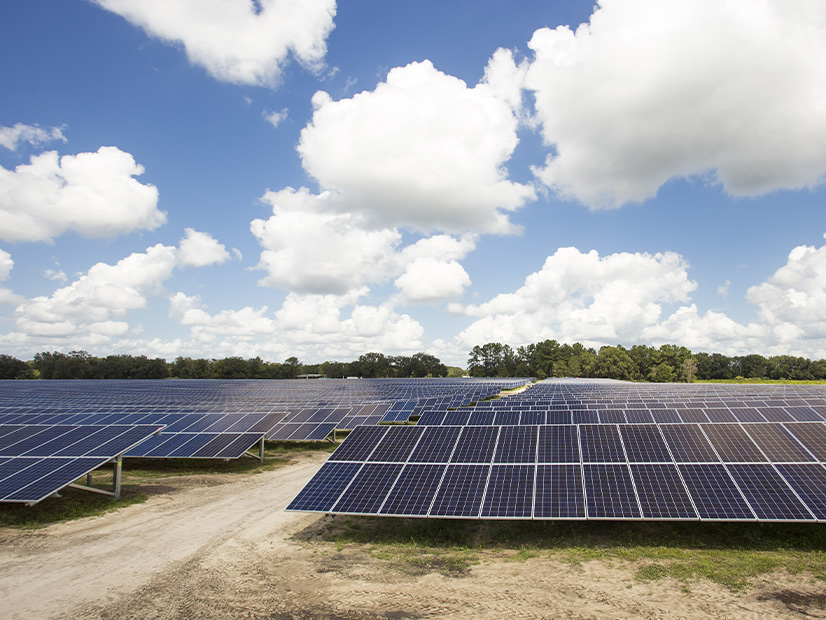
NextEra Energy on Tuesday discussed the continued growth of its renewable energy portfolio in a positive second-quarter 2023 earnings report.
Subsidiary Florida Power & Light placed 225 MW of new solar capacity into service in the quarter, bringing its total for the first half of the year to nearly 1,200 MW, while subsidiary NextEra Energy Resources added 1,215 MW of solar, 150 MW of wind and 300 MW of storage.
“As we indicated in our recent 10-year site plan, solar continues to be the lowest-cost alternative for our customers,” NextEra Energy Chief Financial Officer Kirk Crews said in a conference call with financial analysts.
The challenges surrounding solar power development in 2022 appear to have subsided, he added: “After a period of underlying commodity price inflation, supply chain disruption and trade policy risk premiums, we are finally seeing signs of stability.”
CEO John Ketchum said: “All those ’22 projects that got delayed into ’23 are now starting to go into commercial operation. That’s really good news.”
NextEra Energy has announced intentions to decarbonize its operations, and Crews said Tuesday that remains the plan.
“We believe renewables remain economically attractive to alternative forms of generation,” he said. “Today, we have a pipeline of roughly 250 gigawatts of renewables and storage projects in various stages of development. This includes projects in early stage diligence and our current backlog and is supported by roughly 145 gigawatts of interconnection queue positions.”
This last point is important, Ketchum said.
“I would challenge you to find anybody in the industry that has even close to that number of projects with interconnection capacity,” he told an analyst during the Q&A portion of the call. “Given the demand we’re seeing in the market, if you have a site ready to go with interconnection capacity, that’s the hard part. Finding the customer right now is not the hard part.”
NextEra Energy signed its first contract for a standalone battery energy storage facility co-located with a wind farm in the second quarter, Crews said, and expects to use storage to further monetize its 29 GW renewables portfolio.
Ketchum said this strategy change with storage is possible because of financial changes — investment tax credits under the Inflation Reduction Act — and because of market changes.
“We are starting to see an opportunity, particularly in MISO and SPP, in ERCOT, where capacity values and reliability are being priced higher than … we’ve seen them in the past, given some of the shortfalls that they have in those markets and that just happens to coincide with where most of our wind is,” he said.
Ketchum also emphasized that NextEra’s wind portfolio is not exposed to the highly publicized quality control problems afflicting some turbine manufacturers.
“We do almost all of our business with GE,” he said. “We have done a little bit with Siemens, and I know there’s been some press on Siemens recently. We don’t have any of the Siemens Gamesa turbines in our fleet. I just want to make that very clear.”
During Tuesday’s call, the executive team also discussed second-quarter financials for NextEra Energy Partners LP.
The company completed acquisition of 690 MW of wind and solar assets in the second quarter, pushing its renewable portfolio past the 10 GW mark, but it also ran into one of the limits of wind power: varying wind speed.
The second quarter of 2022 saw the strongest wind in 30 years, 112% of the long-term average. The second quarter of 2023 saw the weakest wind in 30 years, just 86% of the long-term average.
Adjusted EBITDA generated by existing projects declined by approximately $99 million, though new projects and other revenue canceled much of that loss.
NextEra Energy Partners’ stock closed down 4.07% in trading Tuesday. NextEra Energy stock dropped 0.19%.


